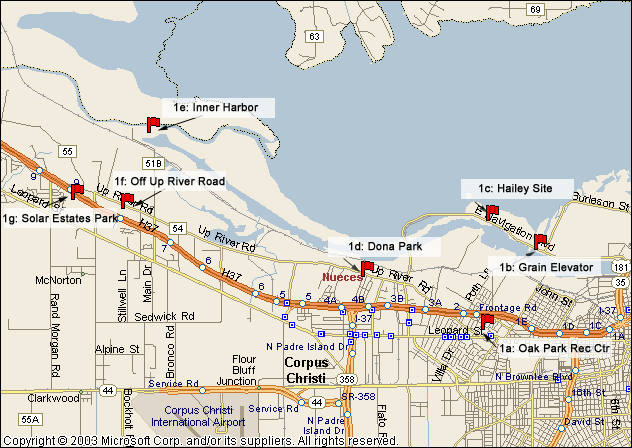|
Project Summary
Background
As a result of a Court Ordered Condition of Probation the
United States District Court for the Southern District of
Texas and the Texas Commission on Environmental Quality (TCEQ)
awarded The University of Texas at Austin’s Center for Energy
and Environmental Resources $6,700,000 to implement the Corpus
Christi Air Monitoring and Surveillance Camera Installation
and Operation Project.
Project Description
The University will install, maintain and operate an air
monitoring and surveillance camera network along the Corpus
Christi ship channel to record the concentrations of specific
air pollutants along the industrial area. The University will
install at least seven air monitoring stations and two
surveillance cameras along the ship channel. The air
monitoring stations will record concentrations of hydrogen
sulfide (total reduced sulfur), sulfur dioxide and volatile
organic compounds, including benzene, and meteorological data.
Data obtained from the monitors will be made available to the
public via the
TCEQ website and the UT Austin website. Additionally, access to view the images
captured by the surveillance cameras will be made available to
the public via the UT Austin's Project website. The University will not identify
emission sources, investigate and remediate air quality
concerns and/or initiate enforcement actions. These functions
are outside the scope of this Project. The Project
started October 2, 2003 and will continue for seven years or
longer, depending on the available Project funds.
Dr. David T. Allen, Director of The University of Texas at
Austin’s Center for Energy and Environmental Resources, will
serve as the Principal Investigator for this project.
Essential to the performance of the project is the involvement
of TCEQ’s Director of Field Operations Region 14 and the
TCEQ’s Section Manager of Lab and Mobile Monitoring,
Monitoring Operations Division, Office of Compliance and
Enforcement. A very important component of this project is the
voluntary Advisory Board. The Board will review project plans
and consult on project implementation, including the selection
of the exact monitoring locations, types of equipment, and
implementation schedules. The Board is comprised of experts in
instrumentation and local air quality issues, community
representatives, and other key stakeholders.
Map of monitoring sites
below:
 |